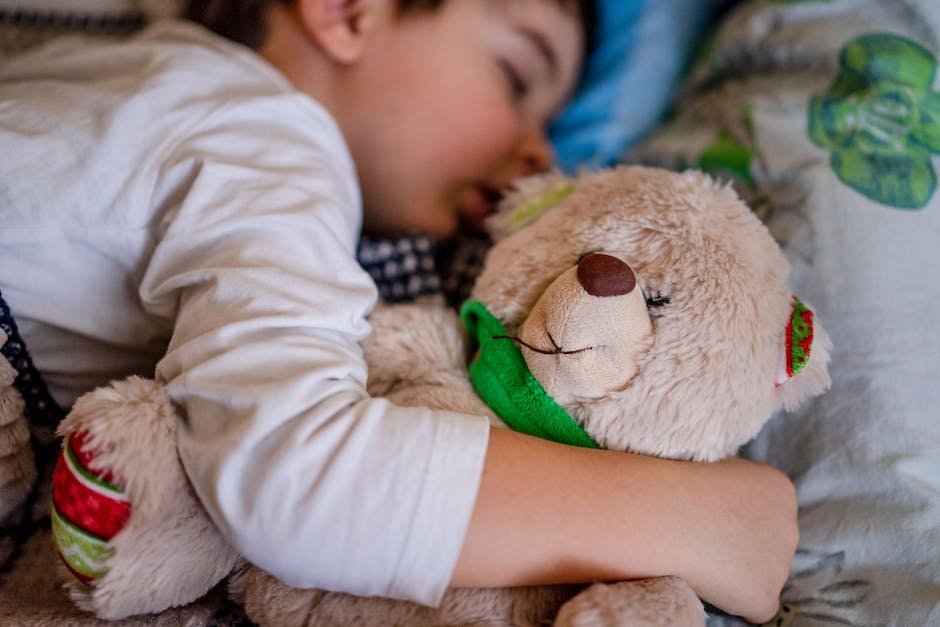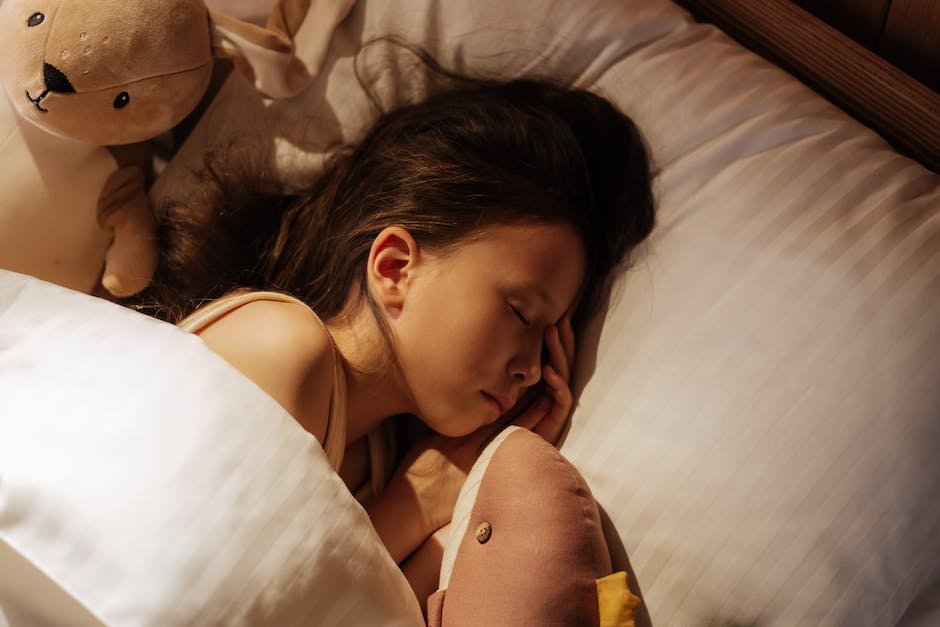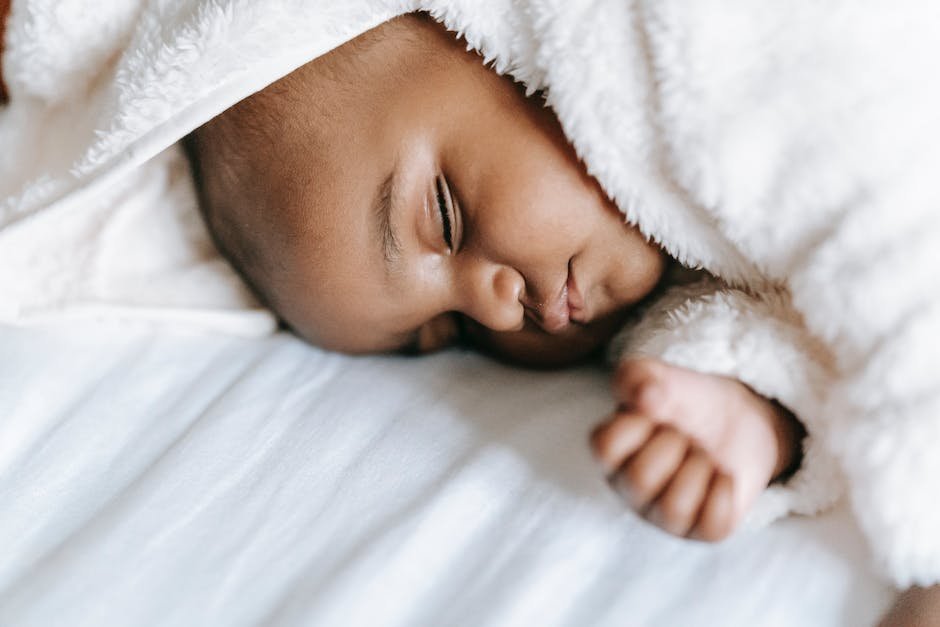
Providing quality care and support for an autistic child involves understanding the myriad experiences they grapple with on a daily basis. One of these is sleep anxiety, a concept that may seem nebulous to many but markedly affects autistic children and their ability to get a good night’s rest. Drawing from scientific studies, parent testimonies and expert insights, we are going to explore sleep anxiety, how it particularly affects autistic children, and the impacts it has on their lives and their families. Furthermore, recognizing sleep patterns and triggers for sleep anxiety is crucial, as it’s a step towards devising effective management strategies. This discussion promises an in-depth understanding of various treatment and management options, emphasizing that each child is unique and that an approach that works for one may not work for another.
Understanding Sleep Anxiety in Autistic Children
Understanding Sleep Anxiety and Its Prevalence in Autistic Children
Do you ever wonder why your neurodiverse child has to struggle to get some sleep every now and then? For parents whose children have been diagnosed with Autism Spectrum Disorder (ASD), sleep issues like insomnia might be a familiar tale. Guilty as charged, it might be what we call sleep anxiety. Time to take a closer look and pull back the layers!
If we are to understand sleep anxiety, we must first simply explain it. In essence, sleep anxiety oftentimes presents itself as an intense dread or fear around the idea of going to sleep. It stems from a susceptible mind linking sleep-time with a variety of concerns. While it can certainly manifest in any child, it seems to have a particularly high prevalence in children with ASD.
According to clinical research, up to 80% of children with ASD experience some form of sleep disturbance. Among these sleep challenges, anxiety appears to be one of the most common issue. For our little ones on the autism spectrum, this anxiety can stem from a variety of factors–irregular sleep routines, sensitivity to certain textures or light, or even difficulty in understanding nighttime rituals. Understanding the root issues can go a long way in addressing the problem.
How can parents help, you ask? Here’s a round-up of some tried-and-true tips that could be your guiding light!
- First and foremost, establishing a consistent sleep routine can be of great help. This routine could include set sleeping and waking times, calming pre-bedtime activities, and a comfortable sleep environment. Sensory-friendly bedding and dimmed lights can soothe and reassure your little one that it’s time to rest.
- Next on the line, understanding and addressing the underlying causes of sleep anxiety in your child can considerably alleviate their fears. If your child struggles with understanding nighttime rituals, using visual schedules can make things easier to comprehend.
- In the event that sleep anxiety becomes a persistent impediment, seeking professional support may be the best course of action. Child sleep consultants, psychologists, or occupational therapists familiar with ASD can be beneficial resources. There’s no harm in asking for help, especially when it comes to the well-being of our precious kiddos!
Remember, each child on the autism spectrum is unique and what works for one may not for another. It may take a bit of trial and error to find the most efficient measures that make bedtime an enjoyable, relaxing affair for your child, but the payoff will be oh-so-worth-it!
So there you have it, sleep anxiety decoded! It’s a common struggle for children on the autism spectrum, but by no means an insurmountable one. Here’s to more peaceful nights and sweet dreams ahead. Keep up the great work, amazing parents! And remember, good sleep is just a few heartwarming bedtime stories away!

The Impact of Sleep Anxiety on Autistic Children and their Families
The Sleep Anxiety Equation for Autism: Its Impacts and How We Can Help
As parents, one of our favorite sights is our children peacefully sleeping. However, this simple joy is often overshadowed by sleep anxiety, especially in kids with autism. This unique challenge further magnifies itself when it extends its impact into the dynamics of the entire family.
We’ve already tackled the fundamental theories of sleep anxiety, its prevalence in the Autism Spectrum Disorder (ASD), and the factors that contribute to it, but let us dig in deeper into the ripple effect sleep anxiety creates within the family unit and beyond.
When a child with autism suffers from sleep anxiety, their nights can be filled with restlessness, constant waking, and nightmares, making them lethargic and irritable during the day. Now this doesn’t only affect the individual child, but family members as well. Siblings might be disrupted from their slumber by noises in the middle of the night, and parents can find themselves stressed and and worn out from managing the situation, many times on limited sleep themselves.
The nocturnal struggles spiral into daytime hurdles as well – an exhausted parent might not function optimally at work, sibling relationships can be strained, and the general mood in the home might become tense. Stretched thin and over the limit, the whole family needs strategies to handle this delicate circumstance.
While tips were already given on how to establish a bedtime routine, sensory-friendly environment and the usage of visual aids there are additional methods that can be helpful. Techniques like deep pressure therapy, with soothing weighted blankets or deep pressure massages, can be calming for a child with autism. Cognitive behavioral therapy (CBT), a form of psychotherapy, helps by changing thought patterns causing fear and anxiety. A gradual approach like the “fade-out” technique allows you to slowly minimize your presence at your child’s bedtime until they feel comfortable falling asleep on their own.
Keep in mind, what works for one child might not work for another. Autism is a spectrum disorder and each child is unique. Research and professional advice is there to provide guidance, but you, the parent, are the keystone. With patience, perseverance, and understanding, you’ll figure out the best strategies tailored to your child’s individual needs.
Remember, what you’re doing is significant. Facilitating a good night’s sleep for your child can be challenging, but the positive impacts reverberate through your entire family. Sleep leads to better mind and body functioning for your child and gives the household the peace it deserves. You’ve got this, parents!
As a community, let’s continue to share our experiences, support one other and never shy away from reaching out if needed. After all, it takes a village to raise a child, and that’s particularly poignant for a child with autism. Let’s continue empowering each other, one sleep-filled night at a time.

Recognizable Sleep Patterns and Triggers for Sleep Anxiety in Autistic Children
Exploring Autism-Related Sleep Patterns and Triggers for Sleep Anxiety
Building a routine is a coveted privilege for every parent. One of the most challenging aspects of this routine is developing a healthy sleep pattern, especially for children on the Autism Spectrum Disorder (ASD). The genesis of sleep anxiety can start anywhere from infancy to adolescence, resulting in disrupted sleep cycles and strains within the family unit.
Sleep anxiety starts its wearisome cloak on daily activities when children with autism, often due to overstimulation, wrestle with restlessness or frequent waking at night. These manifest in patterns that are common among ASD children, causing repercussions like chronic fatigue, school-related troubles and exacerbating ASD symptoms. Worse, parental sleep can also be impacted, causing stress and exhaustion.
Experiencing nightmares, another symptom among ASD children, further cements the fear of sleep. Increased heart rates, sweating, and screaming which can accompany such horrors magnify the plight of sleep anxiety. The striking startle can also have ripple effects on siblings, potentially impacting their sleep quality and personal well-being.
But there’s hope! Armed with understanding and patience, parents can take pragmatic steps to manage sleep anxiety in their little ones. Establishing a bedtime routine that involves calming activities like reading a book or listening to peaceful music can provide immense relief. A sensory-friendly environment includes lighter touch fabrics, white noise machines, or darkening shades, providing a soothing ambiance conducive to sleep. Visual aids using storyboards or charts can further cement the routine, making the child feel safe and secure.
Deep Pressure Therapy (DPT) is a method shown to comfort and calm children with ASD. A firm but gentle touch, much like an affectionate hug or a cozy blanket, can provide immense relief. Cognitive Behavioral Therapy (CBT) guidance can also be beneficial. It uses a blend of talk therapy and behavioral modification to help children cope with sleep anxiety.
Recognize that a cookie-cutter approach might not work. Each child’s needs, triggers, and responses are unique. Flexibility and customization to each child’s individual needs take precedence. What works effectively for one might not work for another. It’s a trial and error process, and that’s okay!
Renaissance is tangible when there’s a good night’s sleep! A rested child exhibits increased cognitive functioning, is more open to learning, displays better social behaviors, and experiences overall enhanced mental health. It also offers siblings and parents their much-needed reprieve, enabling them to better support the child.
Should it feel burdensome, remember there’s a world of considerations and community support available. No one is alone in this journey. Reach out, seek help if necessary – this is a collective effort. Above all, a household with an effective sleep routine stands testimonies of resilience, patience and endless love. Remember, this is not just about fighting sleep anxiety but about making every child’s dream of a restful sleep come true!

Treatment and Management Techniques for Sleep Anxiety in Autistic Children
Working with sleep anxiety can be quite tough for the entire family, but more so on the little one who has to face those fearful nights. Restlessness, frequent waking, and nightmares can all be symptoms that your child is struggling with sleep anxiety. These challenges not only disrupt the child’s sleep but can also impact the parents’ and siblings’ sleep patterns, leading to an overall increase in stress within the household. It’s these instances that reveal how deeply interconnected family life truly is.
Dealing with sleep anxiety in children with autism requires a combination of strategies. In addition to the aforementioned consistent sleep routine, creating a sensory-friendly sleep environment, and using visual aids, other techniques such as Deep Pressure Therapy (DPT) and Cognitive Behavioral Therapy (CBT) can also be beneficial.
DPT often involves applying firm but gentle pressure on the body, giving the child a sense of calm and comfort. This can be done using weighted blankets or compression vests, which have shown significant results in reducing anxiety and promoting sleep in some autistic children.
Cognitive Behavioral Therapy, on the other hand, can be an invaluable tool for children who can verbally communicate. CBT works by changing the child’s thought patterns, helping them to confront and manage their sleep fears instead of avoiding them. This approach, when appropriately tailored to the child’s individual needs, can be highly effective.
This takes us back to the fundamental reminder that every child on the autism spectrum is unique. What works for one may not necessarily work for another. It is a process of trial and error, fine-tuning each strategy depending on the child’s preferences, reactions, and comfort.
Indeed, managing sleep anxiety in autistic children requires a tremendous amount of patience, love, and resilience. But the reward is mighty – a good night’s sleep has profound effects on the child, the mood at home, and family life as a whole. It enhances cognitive functioning, broadens the scope for learning, improves social behaviors, and overall mental health of the child.
Amidst all these efforts, never underestimate the significance of community support. There’s immense power in sharing knowledge and experiences, in learning from each other’s trials and successes. So don’t hesitate to reach out for help when you feel overwhelmed. Into this shared space, we weave a net of compassion and understanding, making the journey lighter for each one of us.
In this whole quest of addressing sleep anxiety in your child, remember, the journey might seem an uphill climb now, but with the right strategies, persistent attempts, and above all, unwavering hope, nights of peaceful sleep are attainable. Parenthood, after all, is falling in love with tiny miracles and finding joy in their strides.

Attaining a comprehensive grasp of sleep anxiety, its triggers, and ramifications in autistic children is essential for adapting effective coping mechanisms. Investigating the experiences of other parents, examining scientific studies and integrating expert tips has brought us insights on how prevalent this issue is, and how it influences the lives of children and those caring for them. Understanding sleep habits and triggers, and knowledge of both standard therapies and home remedies, has empowered us in devising personalized strategies for coping with sleep anxiety in autistic children. Ultimately, the journey to managing sleep anxiety is littered with trials and errors, success and setbacks. But patience, persistence, and individualized care have been shown to significantly help these children enjoy a peaceful night’s sleep, underscoring a marked improvement in their overall quality of life.




